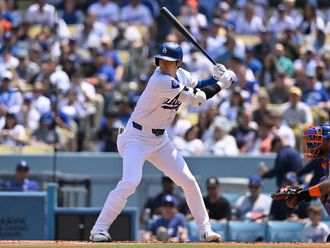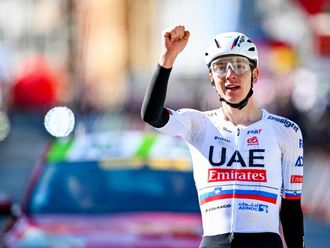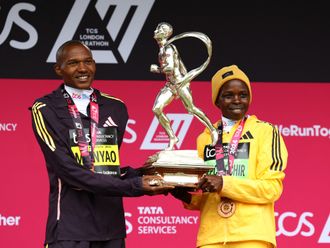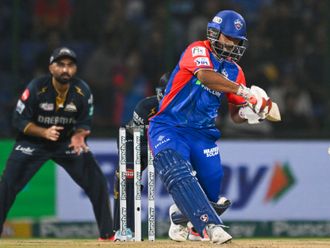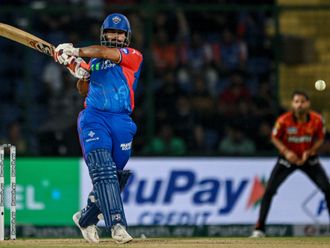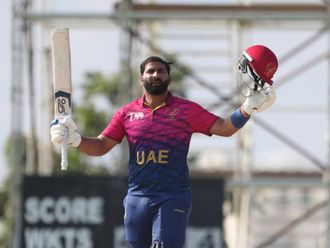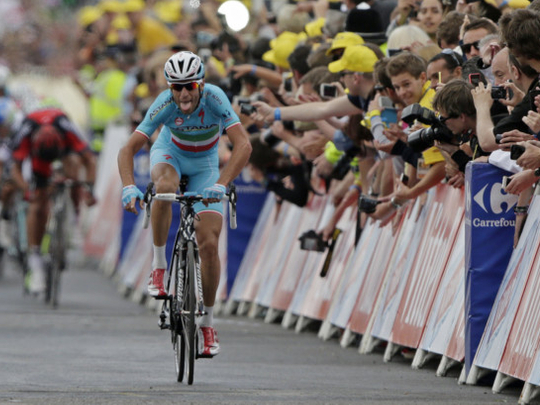
Paris: After two years of Sky dominance, 2014 was the season that the rest fought back and, but for the Astana doping scandals, would have gone down as a vintage year.
Team Sky had in many eyes taken the drama out of the Tour de France by guiding Bradley Wiggins and Chris Froome to dominant victories in 2012 and 2013 respectively. But the British outfit’s inability to maintain that level of performance in 2014 helped to make it a thrilling year in cycling.
Vincenzo Nibali was the main beneficiary as he emerged from the chaos of crashes during the Grand Boucle — that saw three former winners in Froome, Alberto Contador and Andy Schleck hit the deck and leave the race during the first 10 days — to streak away to victory.
The Grand Tours produced a high level of winner during the year, with Nairo Quintana triumphing at the Giro d’Italia and Contador claiming a third Vuelta a Espana after a terrific battle with Froome.
It has all led to much excitement ahead of the 2015 Tour, with people expecting the four best stage-racers in the world — Froome, Contador, Quintana and Nibali — to put on a nail-biting show on the way to Paris.
That should be the case now that the International Cycling Union (UCI) granted Nibali’s Astana team a World Tour licence for 2015, despite a spate of doping scandals.
Five Kazakh riders tied to the Kazakh team’s World and Continental Tour squads tested positive for either the banned blood-booster EPO or steroids during 2014, leading to speculation the UCI would kicked Astana out of cycling. But, fortunately for Nibali, Astana were granted a licence under certain conditions that will see them closely monitored in 2015.
Away from the Grand Tours, there was the start of a changing of the guard.
Spartacus — Fabian Cancellara — won his third Tour of Flanders with a masterful and patient ride, making his move at just the right time to deny Belgian duo Greg Van Avermaet and Sep Vanmarcke.
A week later and it was Dutchman Niki Terpstra who claimed victory at Paris-Roubaix, with Cancellara and Tom Boonen out-thought in the finale.
But it was the emergence of the likes of Norway’s Alexander Kristoff in Flanders (fifth) and German John Degenkolb in Roubaix (second) that suggested the old guard are starting to be eased out.
There was more such evidence during the Ardennes Classics, despite Philippe Gilbert (Amstel Gold), Alejandro Valverde (Fleche Wallonne) and Australian Simon Gerrans (Liege-Bastogne-Liege) claiming victories.
Young pretenders such as Pole Michal Kwiatkowski, who finished in the top five in all three, including taking two podium finishes, and Ireland’s Dan Martin (Fleche Wallonne) and Jelle Vanendert of Belgium (Amstel Gold) both earning a second-place finish.
It was 25-year-old Pole Kwiatkowski who took the most confidence from his performance and went on to become world champion in September with a masterful late break in Ponferrada.
That was also the setting for Wiggins to demonstrate he is the only man capable of upsetting time trial king Tony Martin.
The German had won three world titles against the clock in a row but Wiggins, who also beat Martin at the London Olympics, proved he is one of the greatest, and most versatile, riders of his generation.



